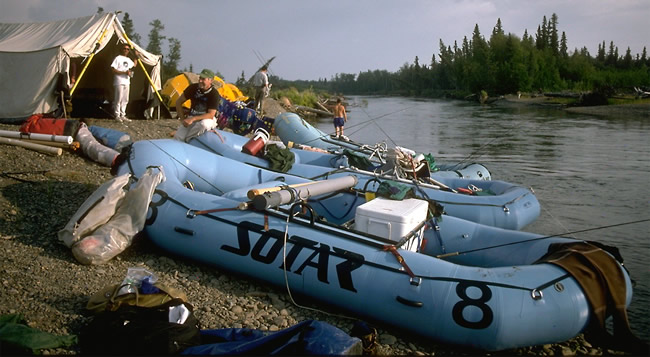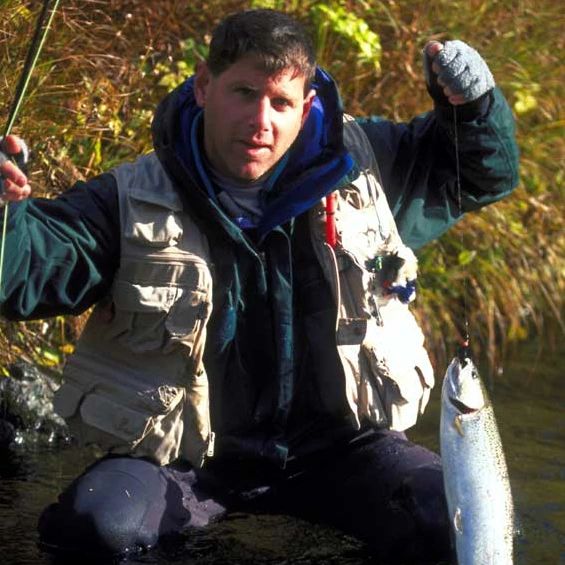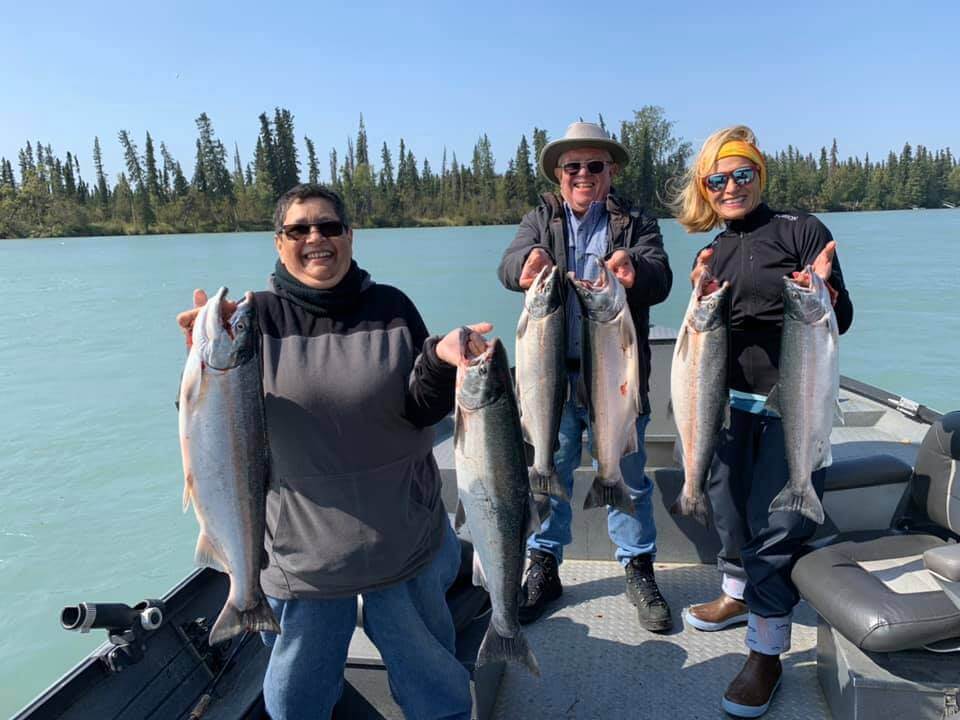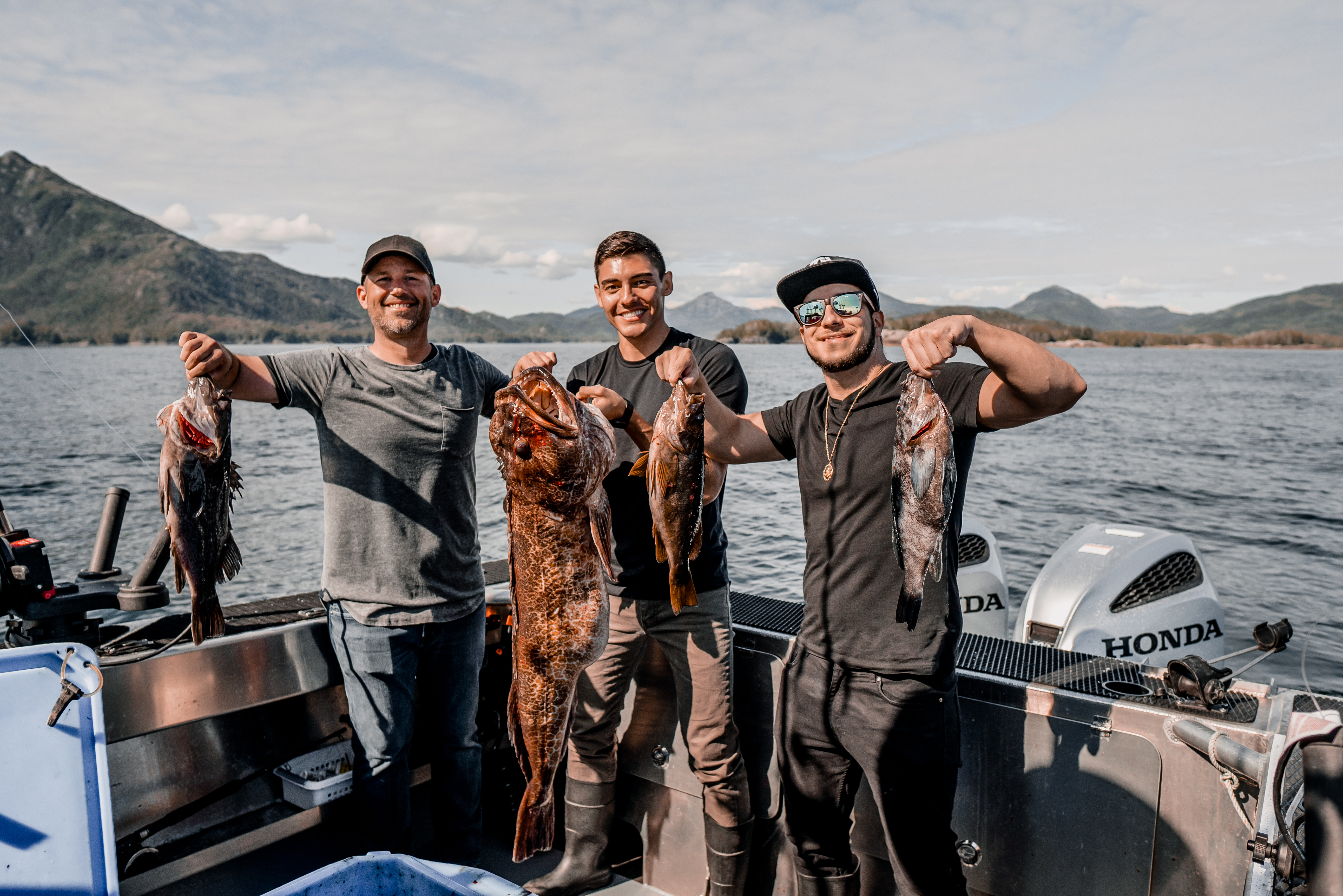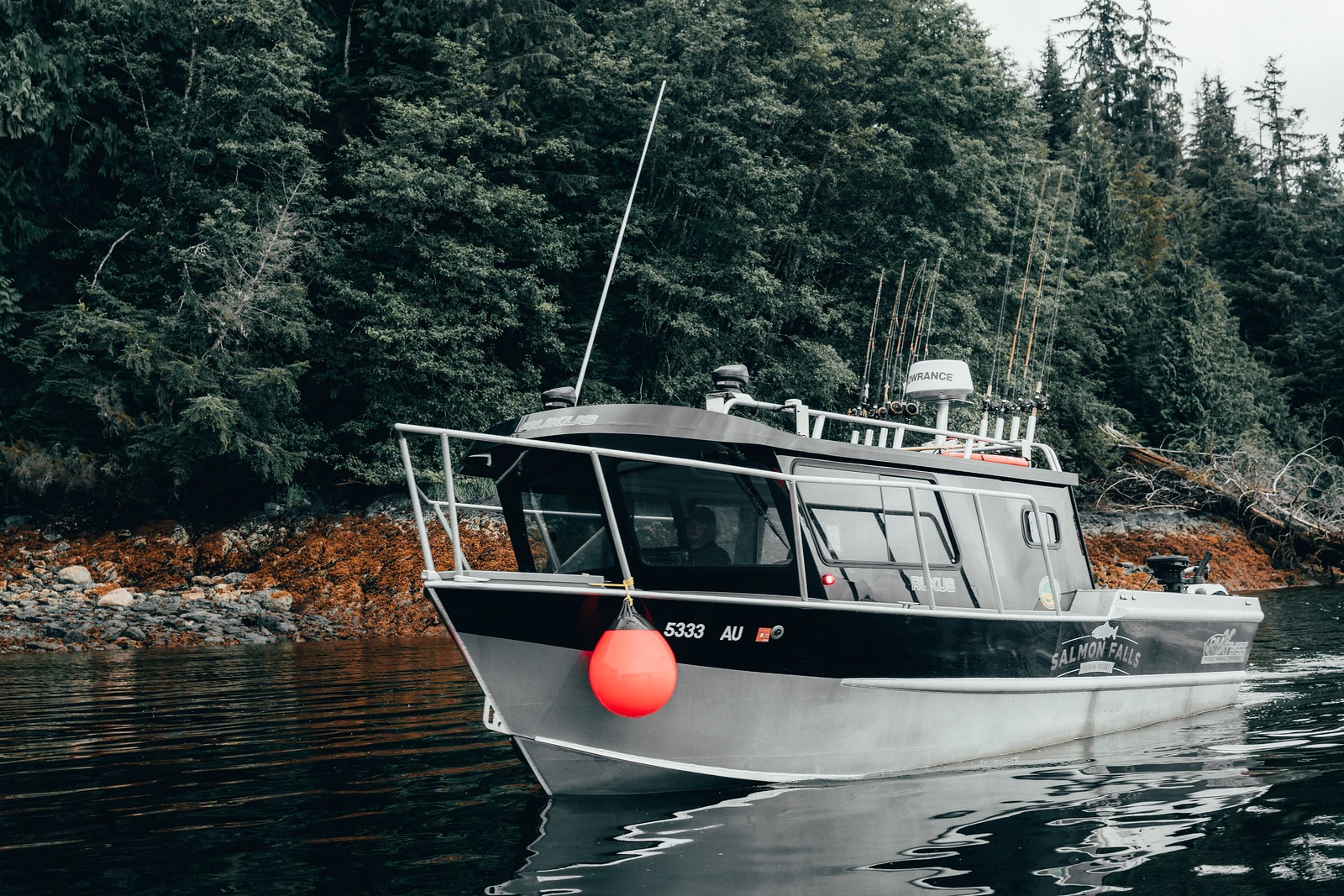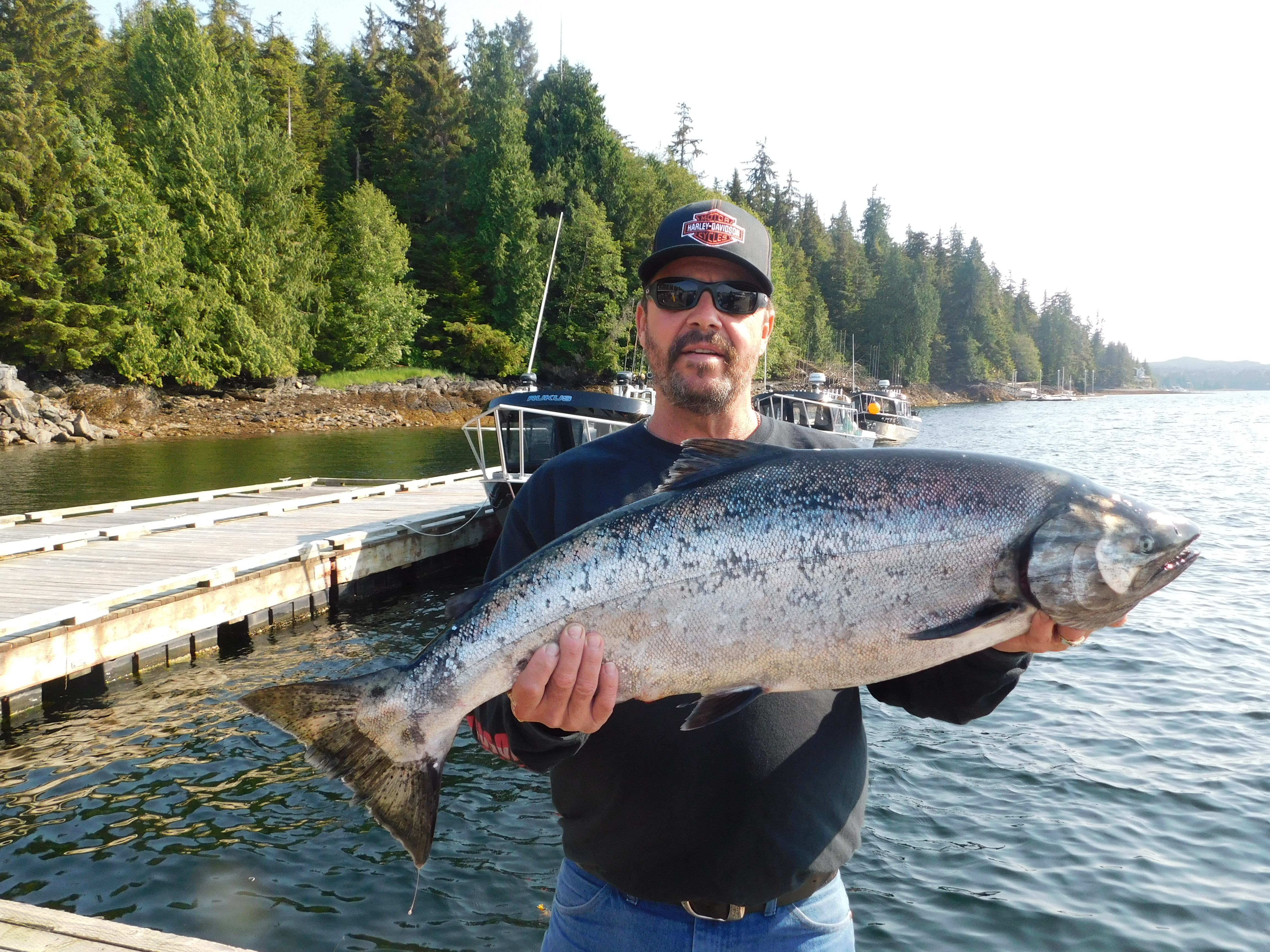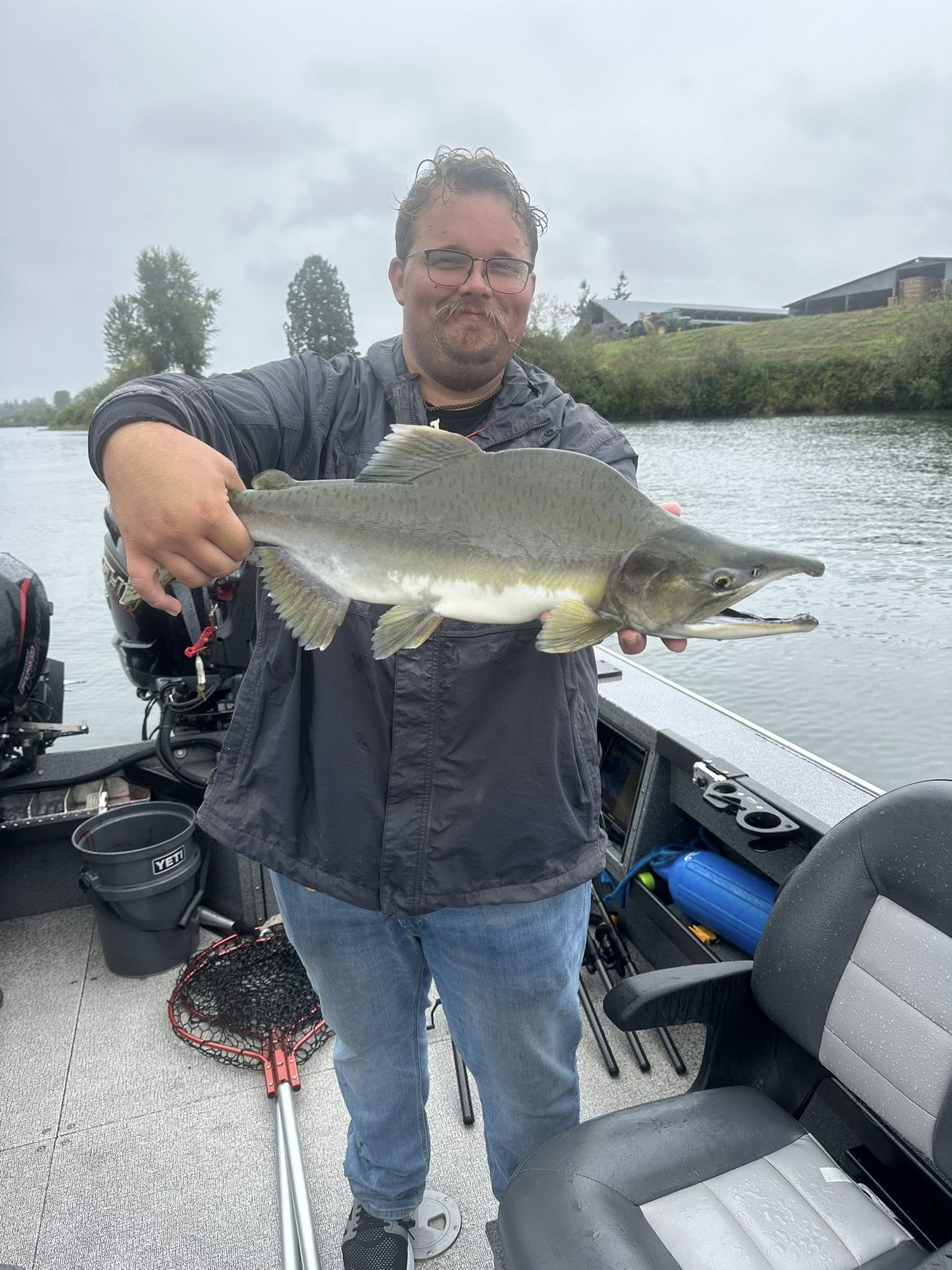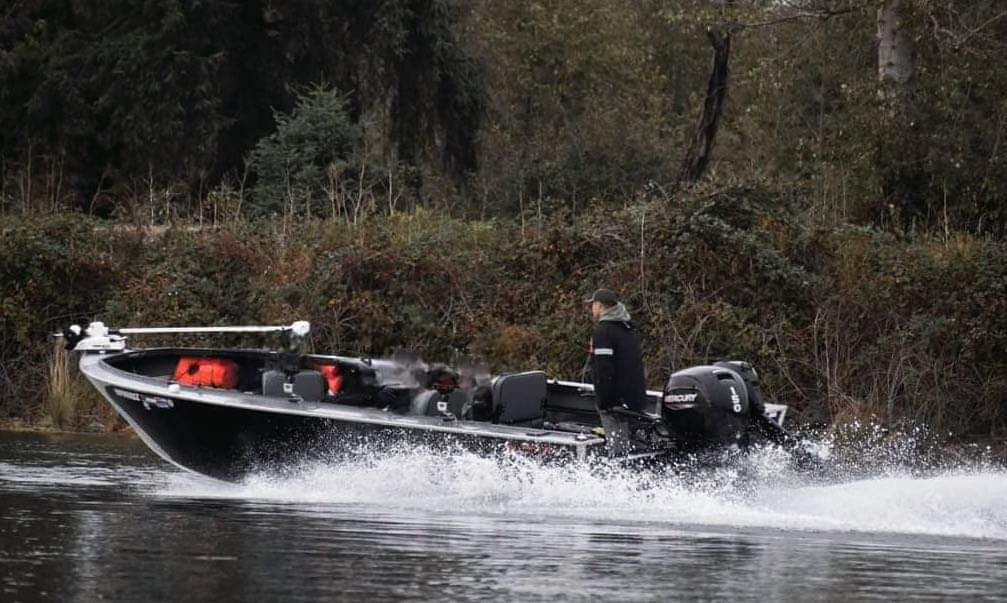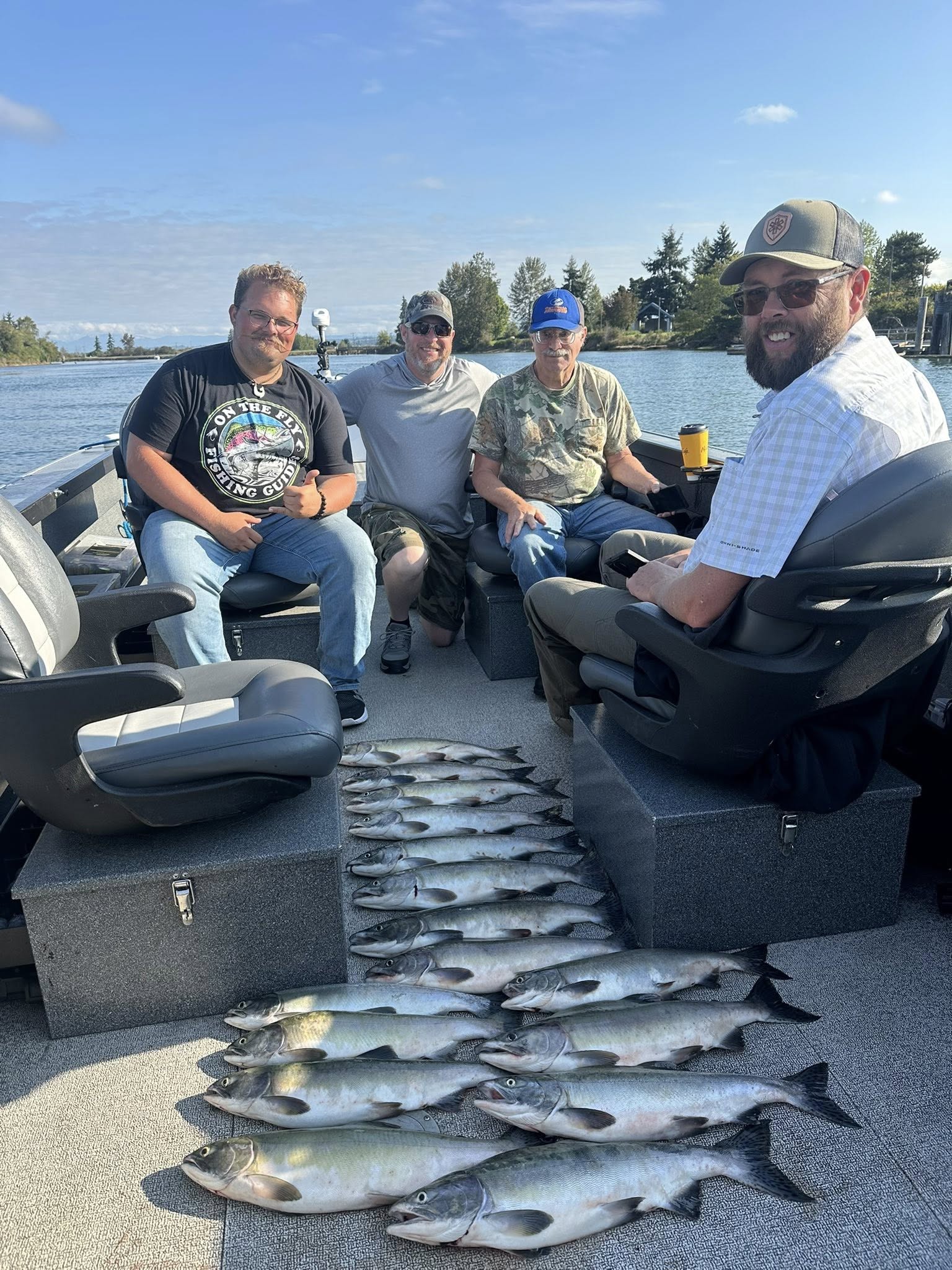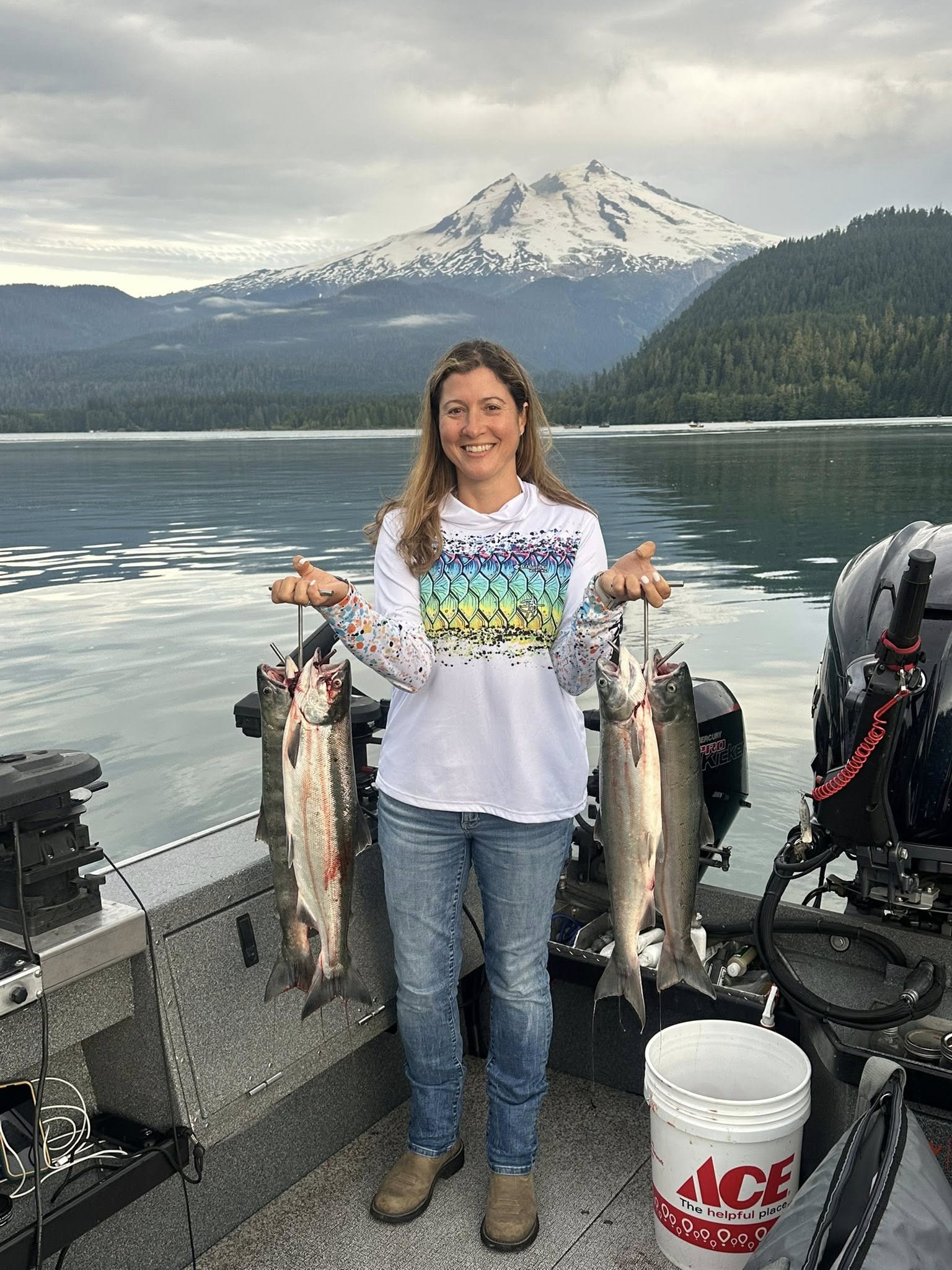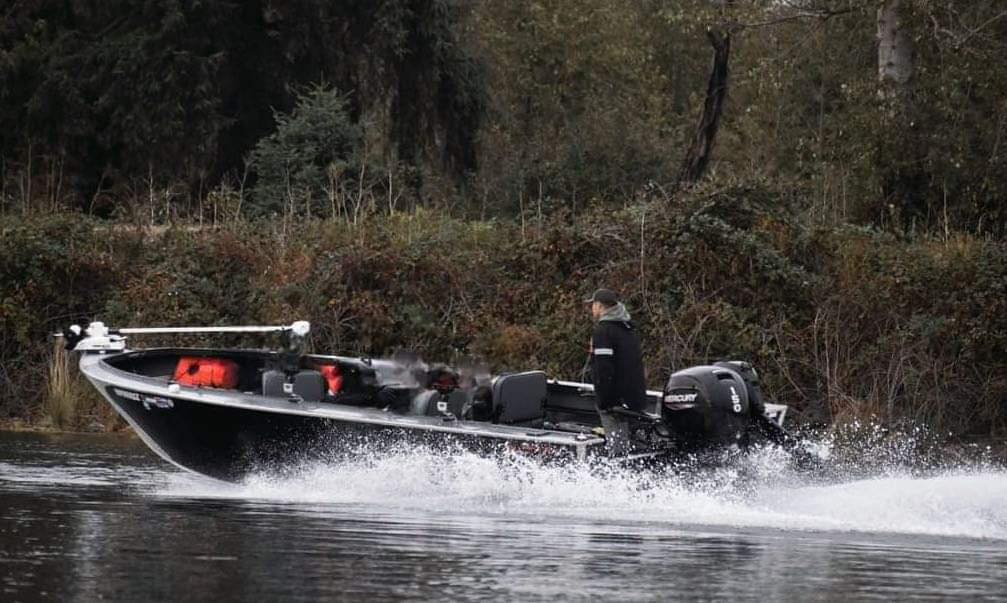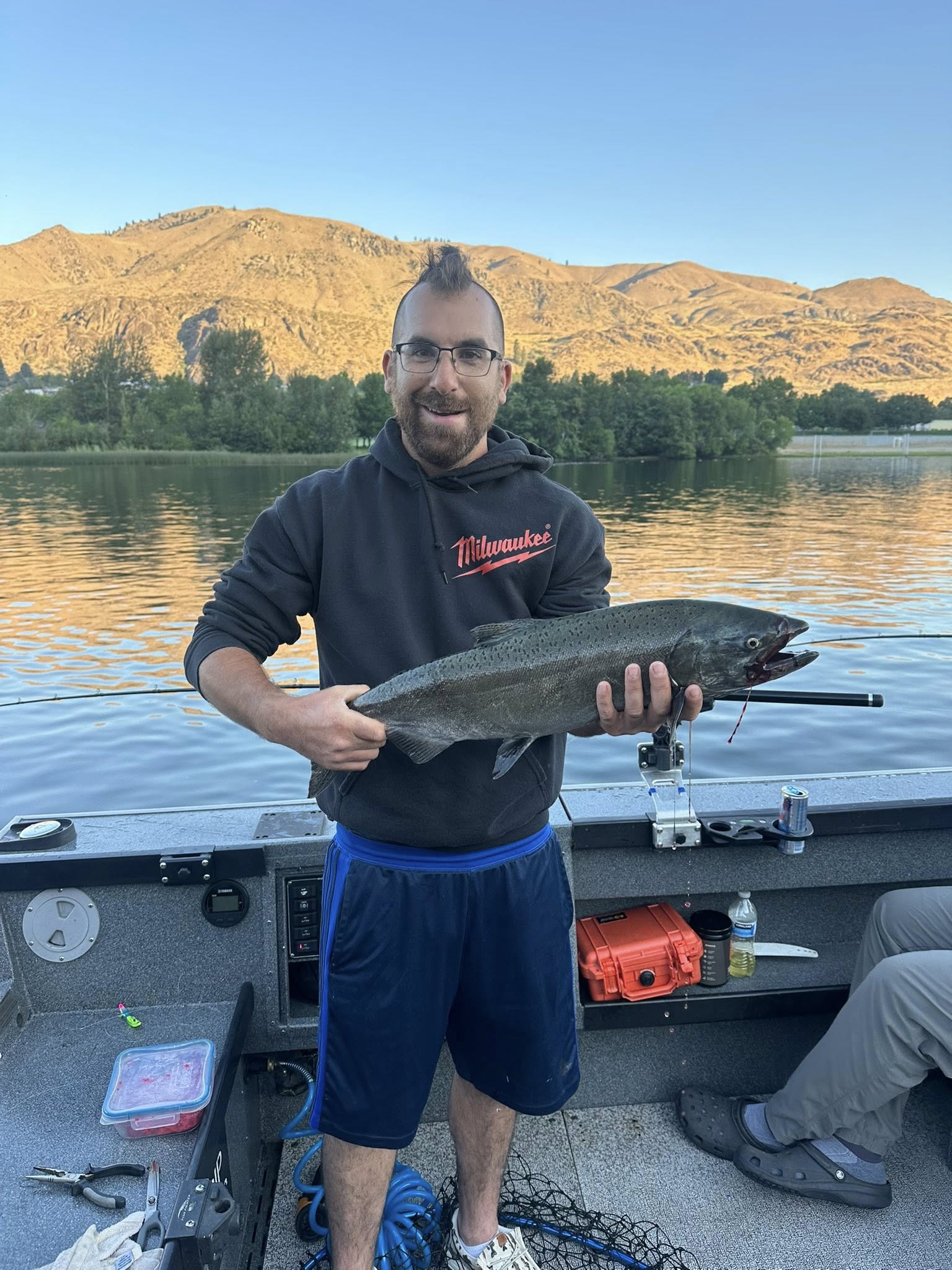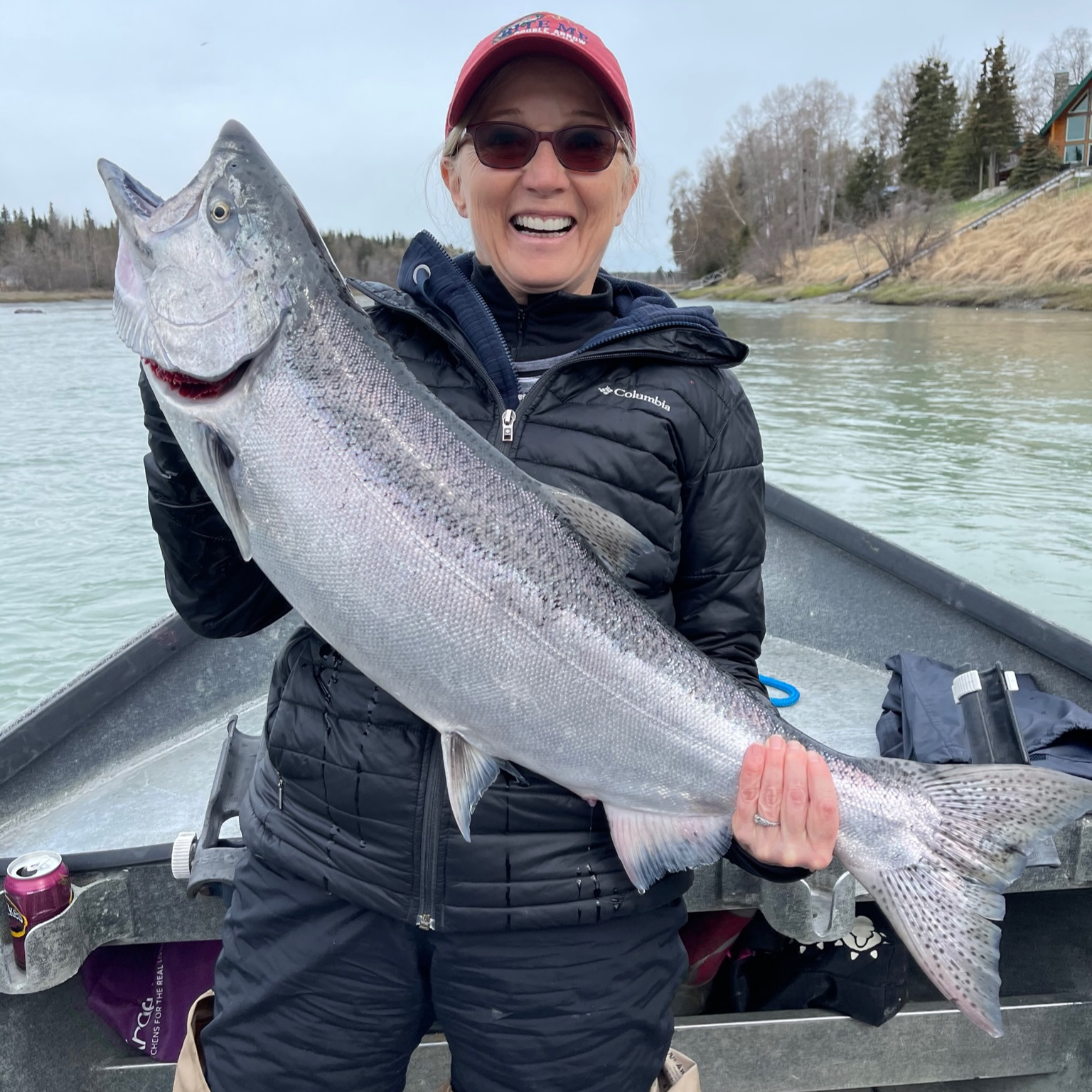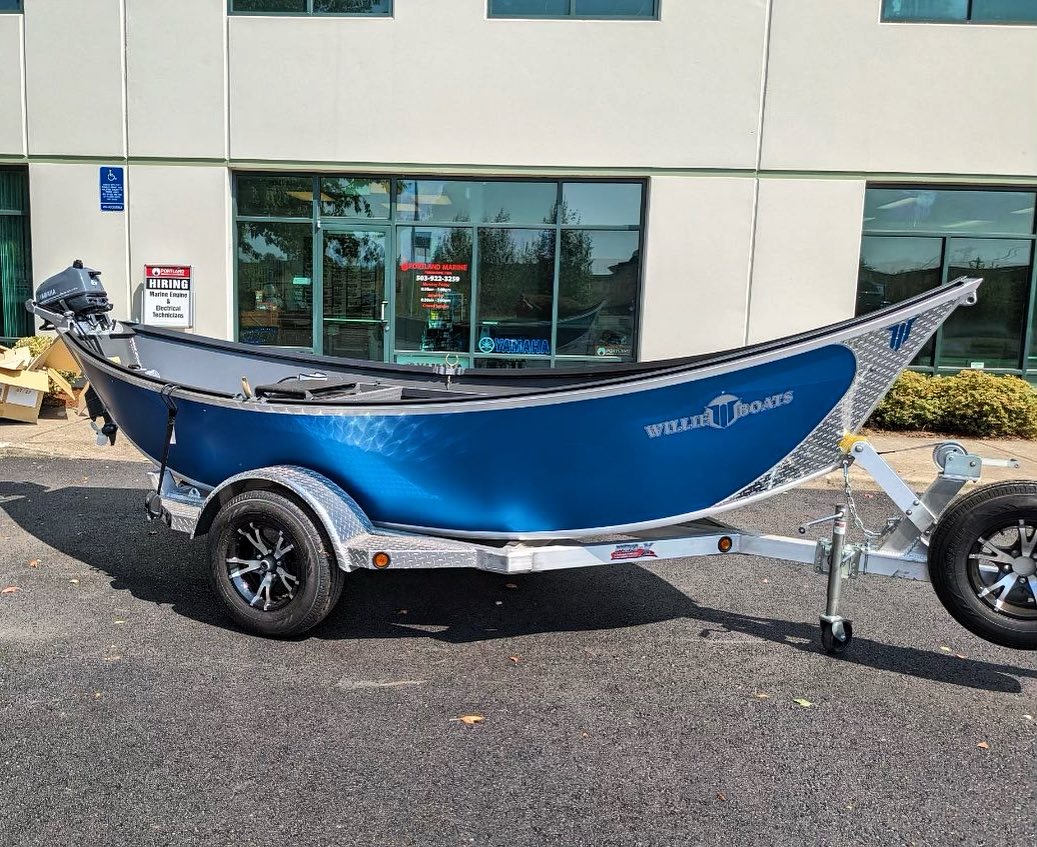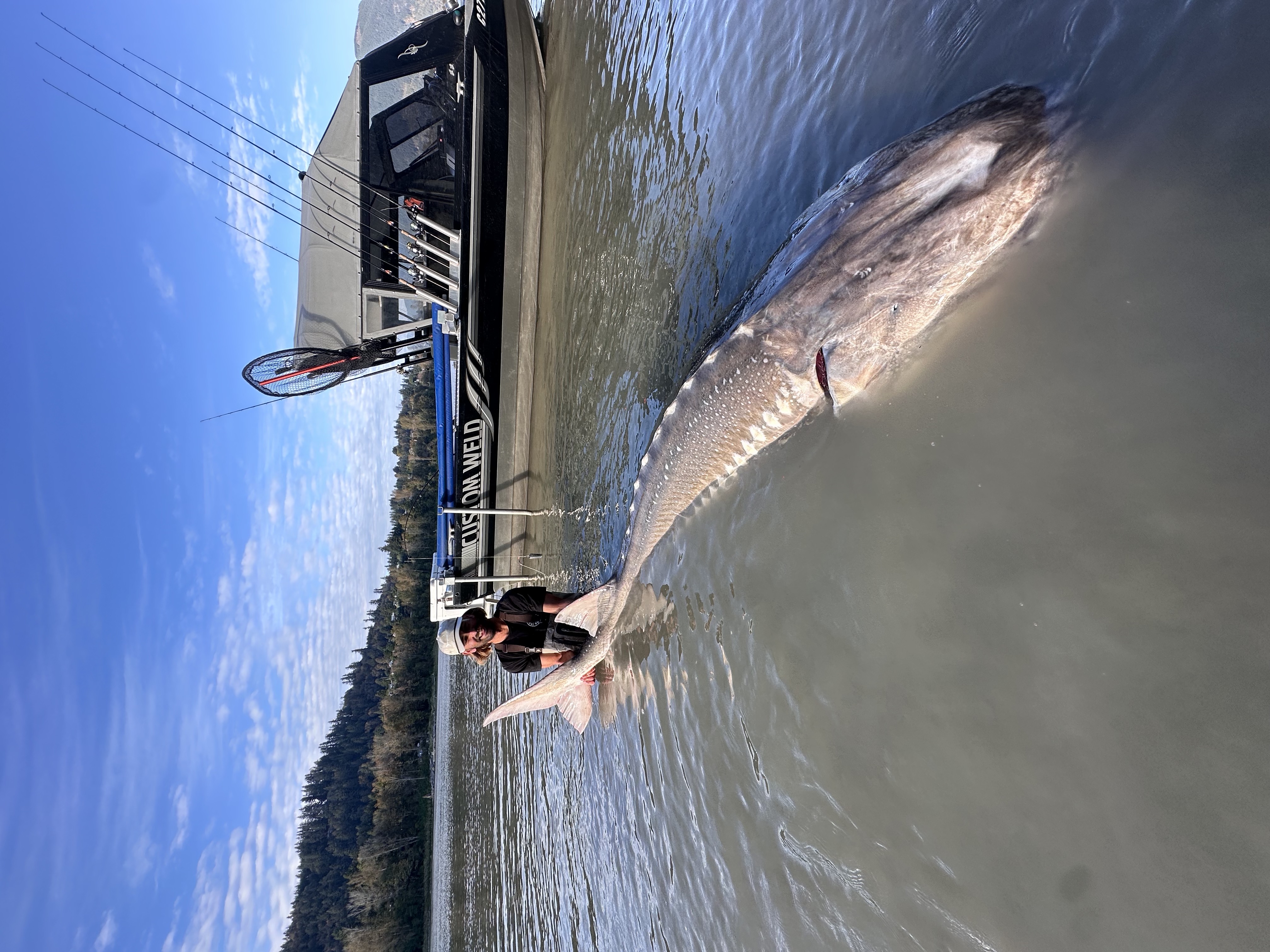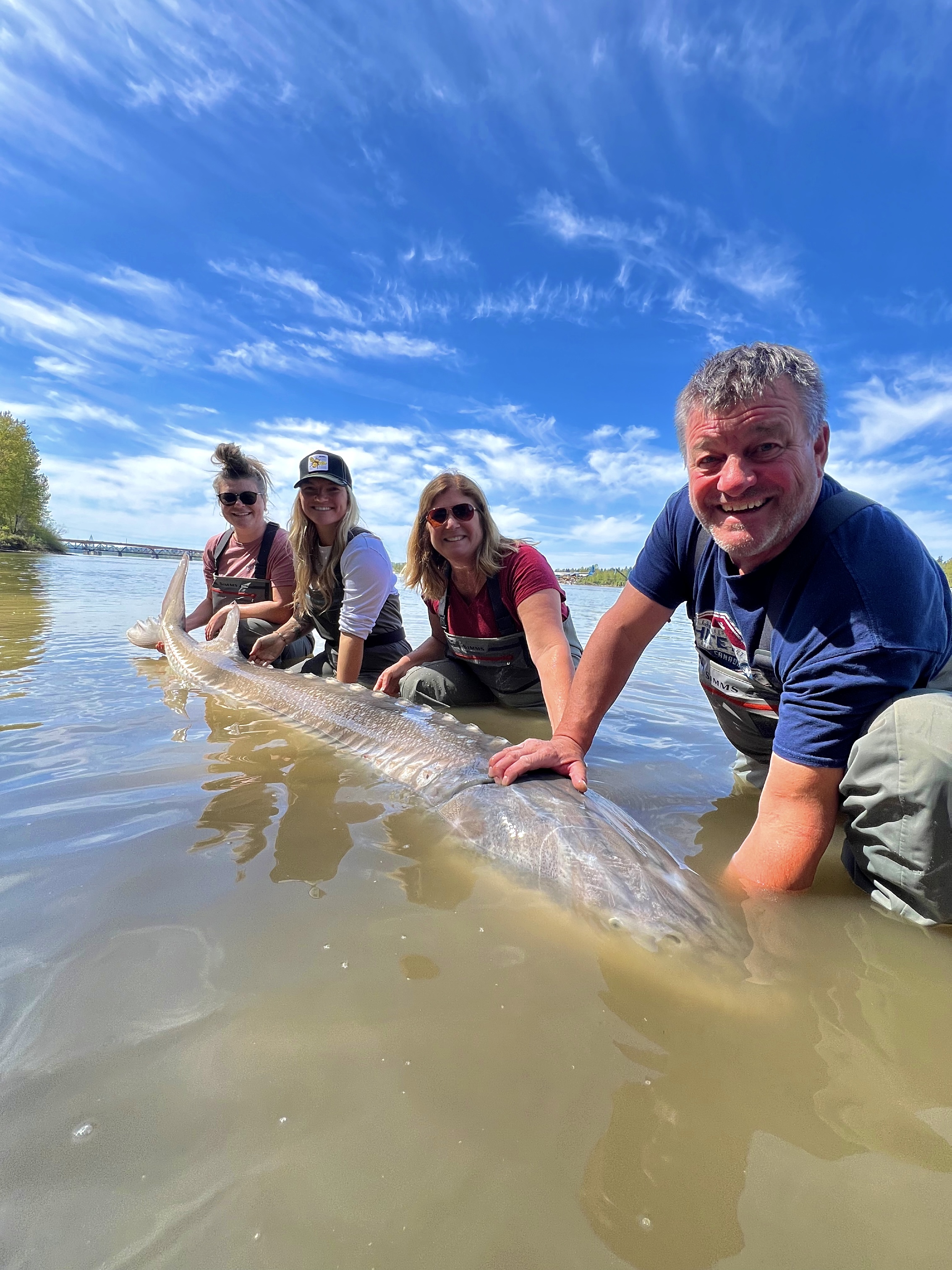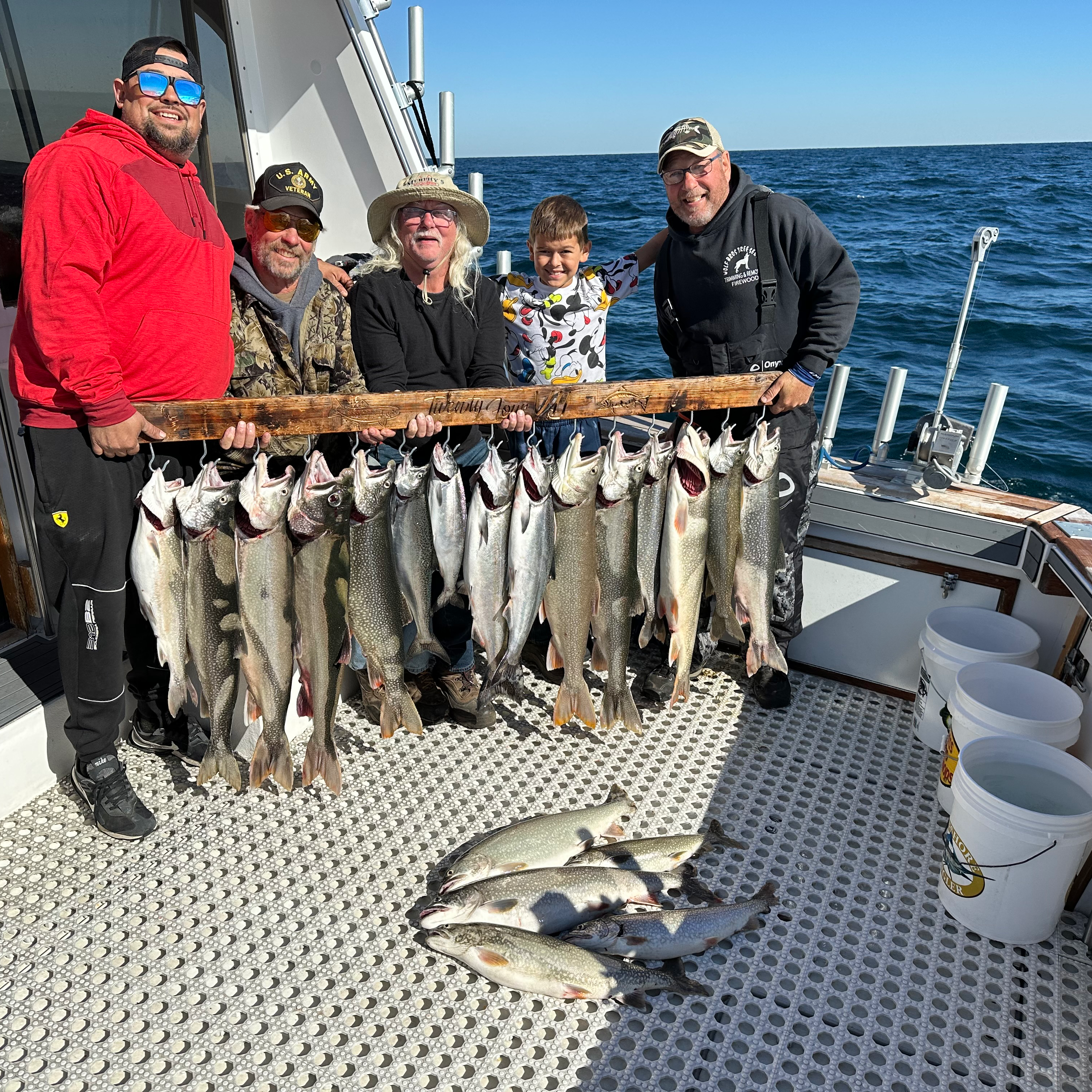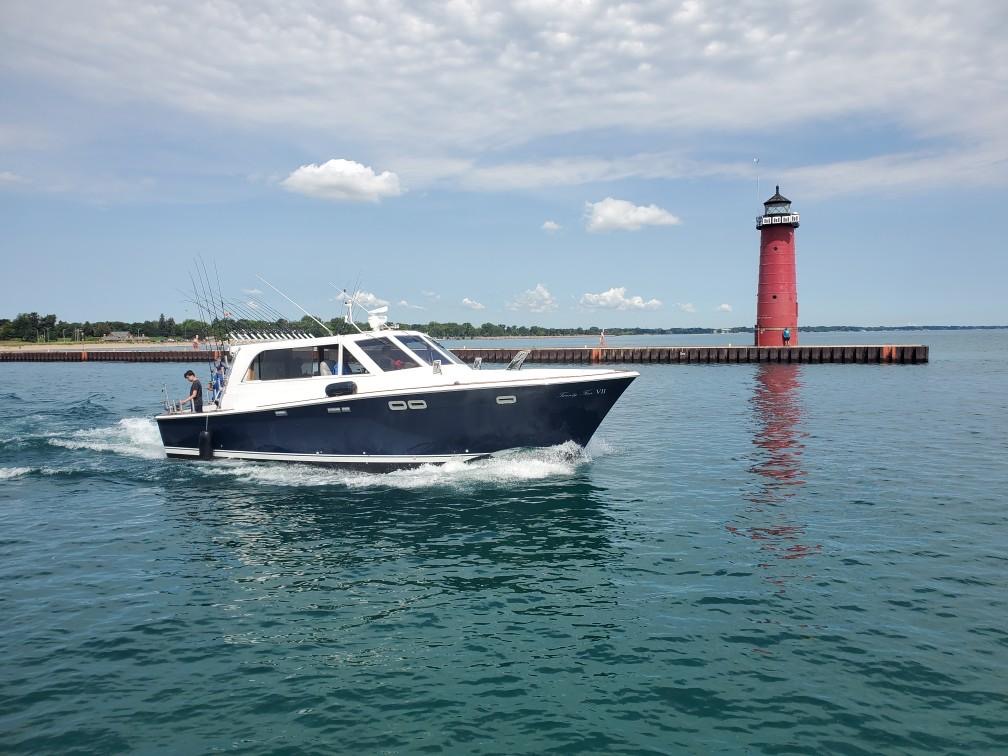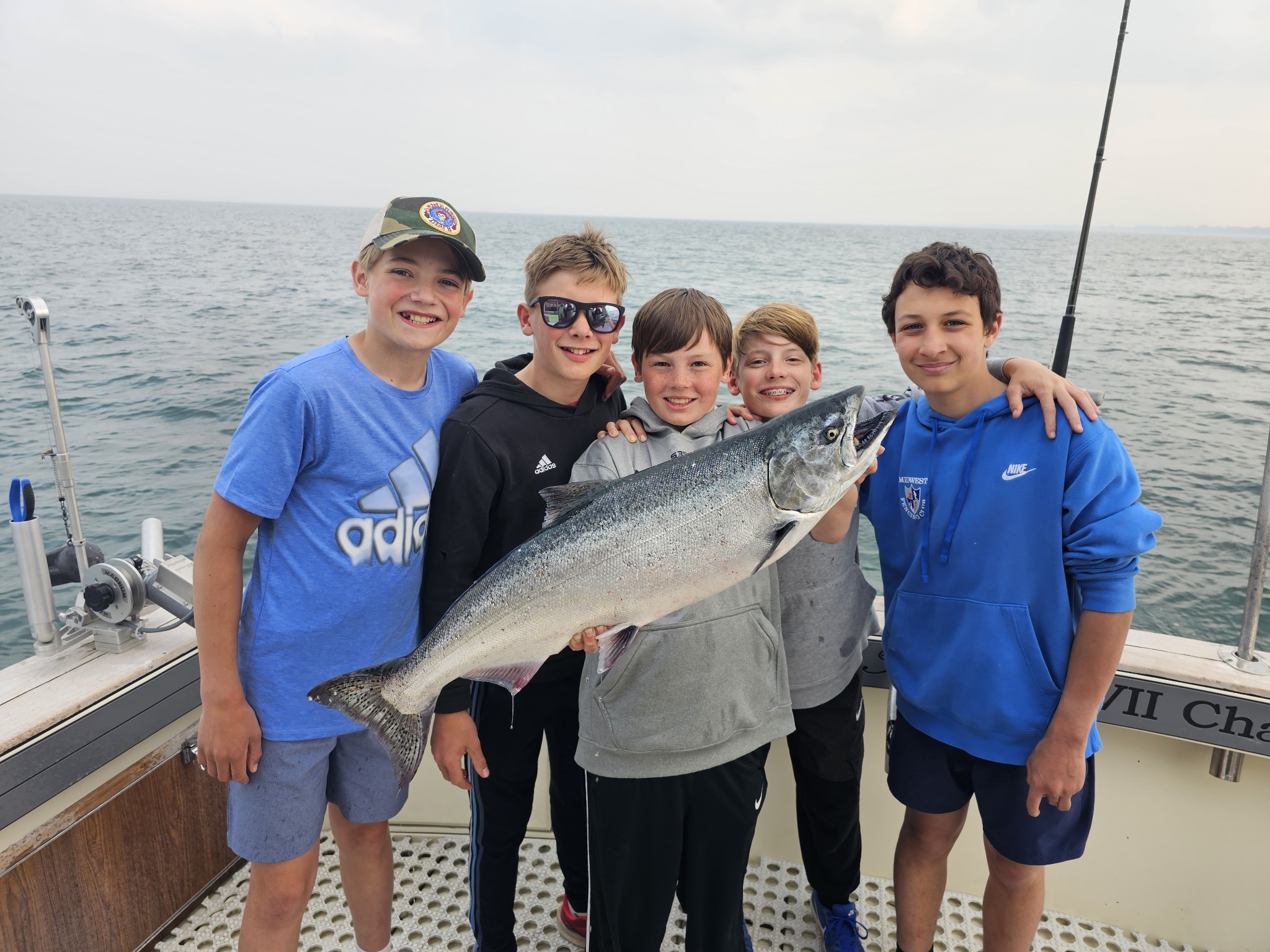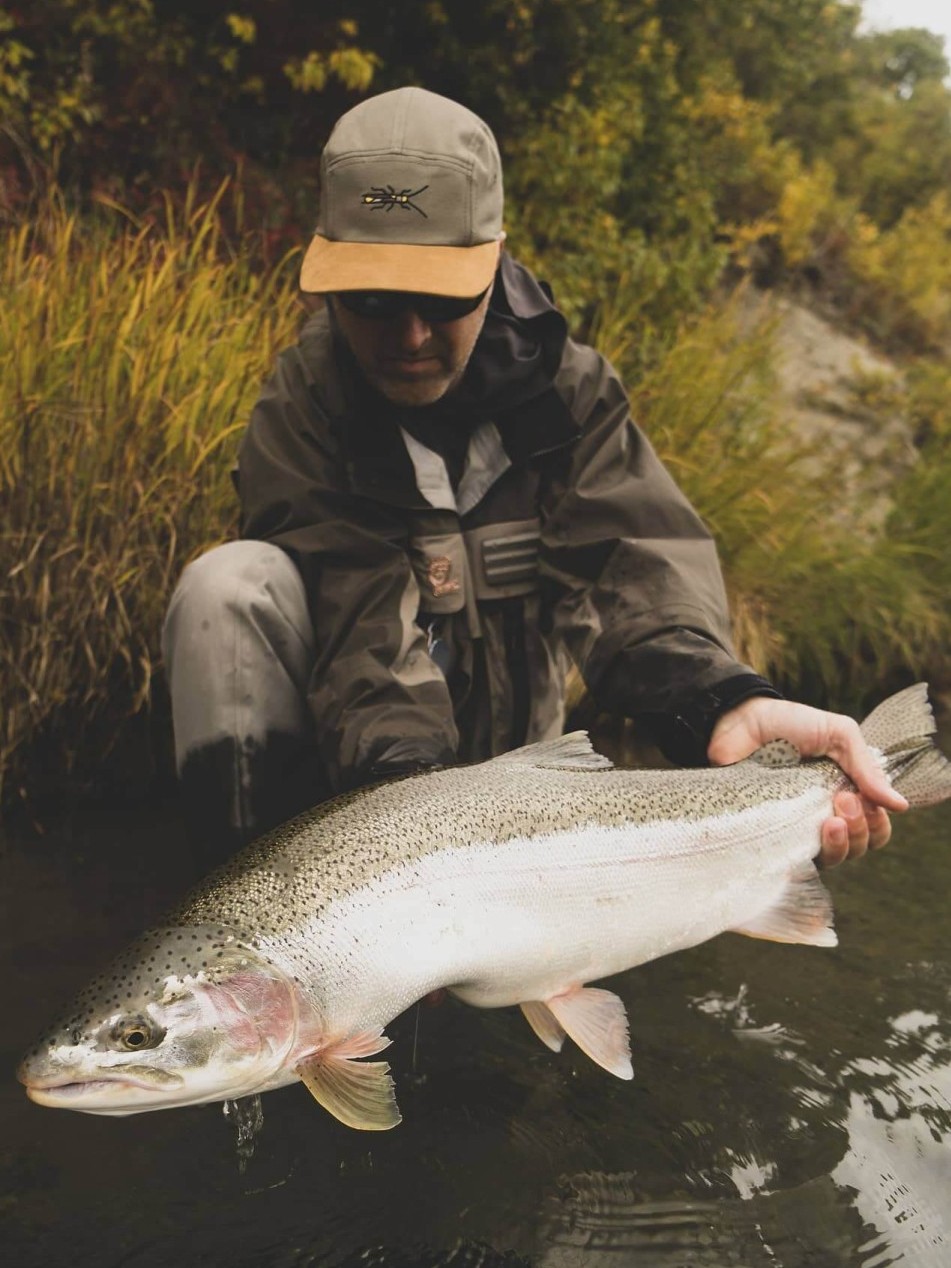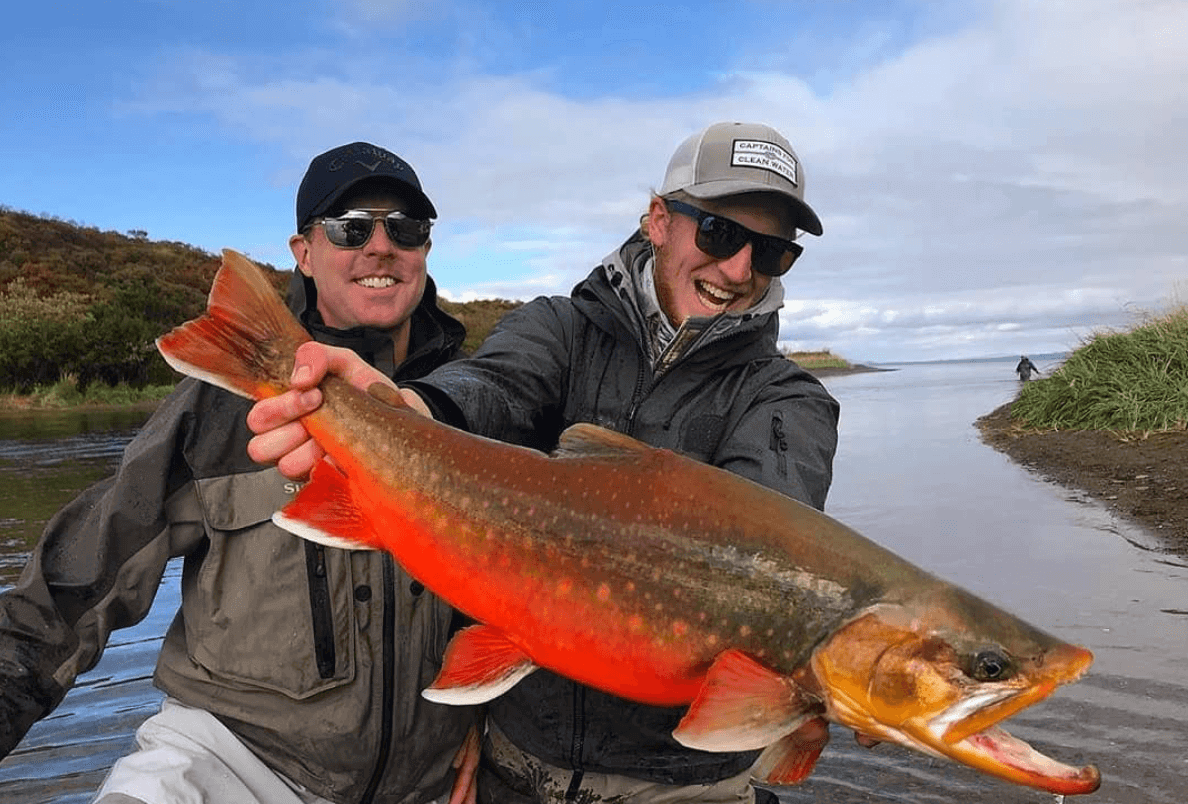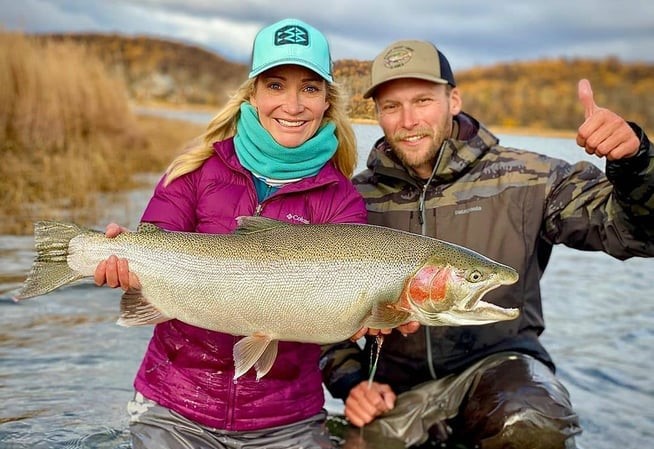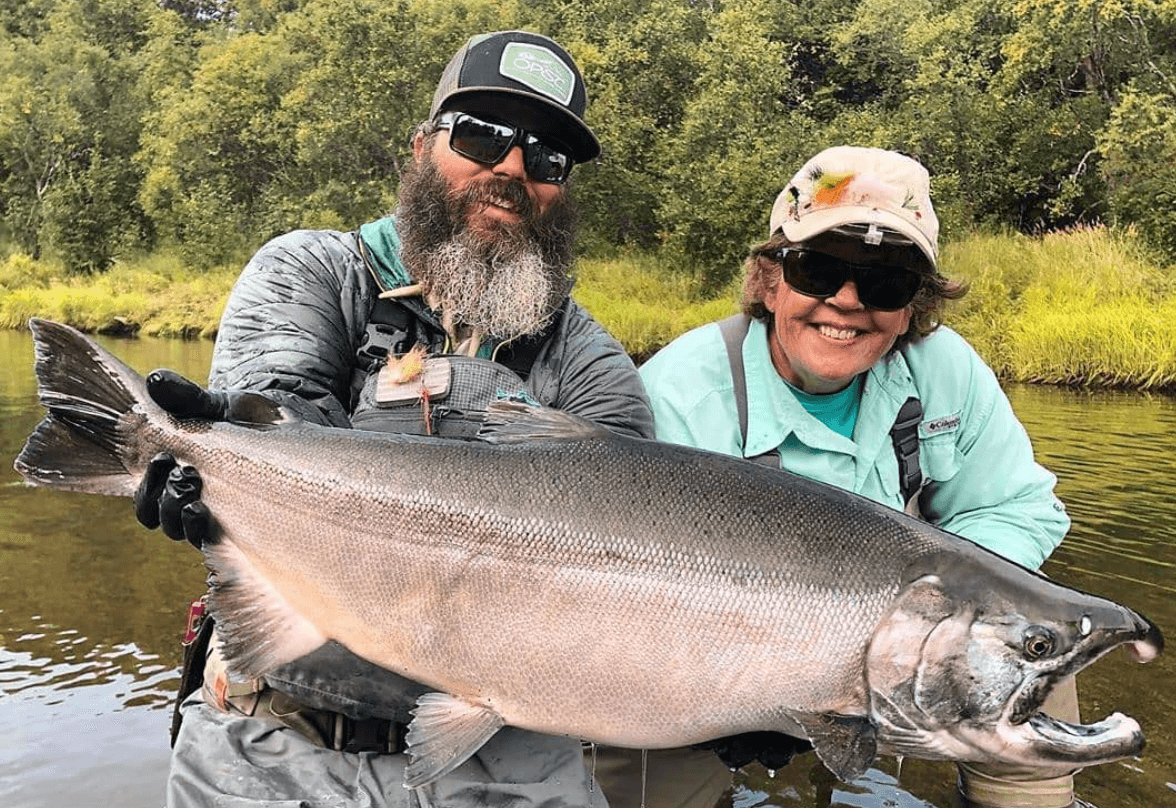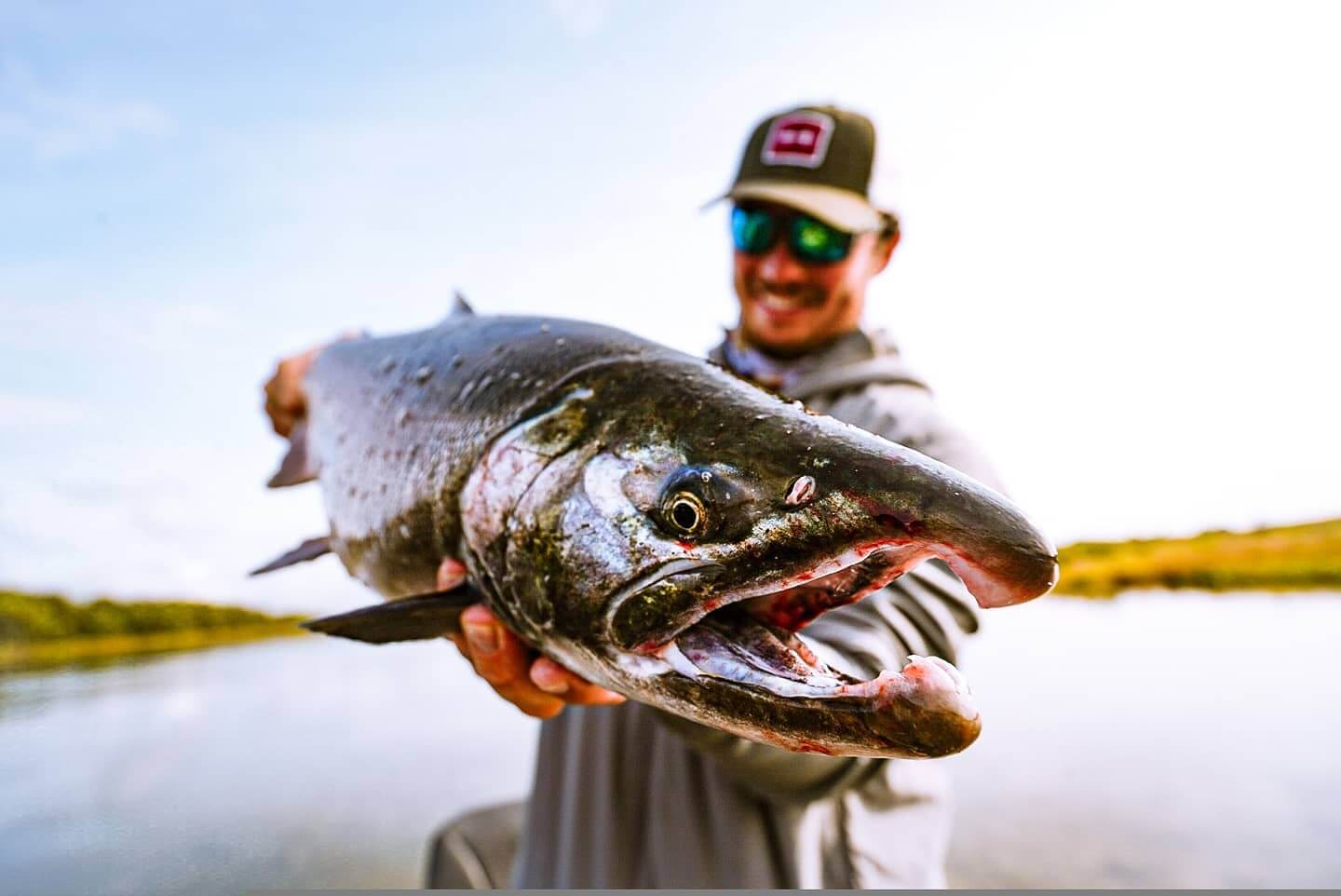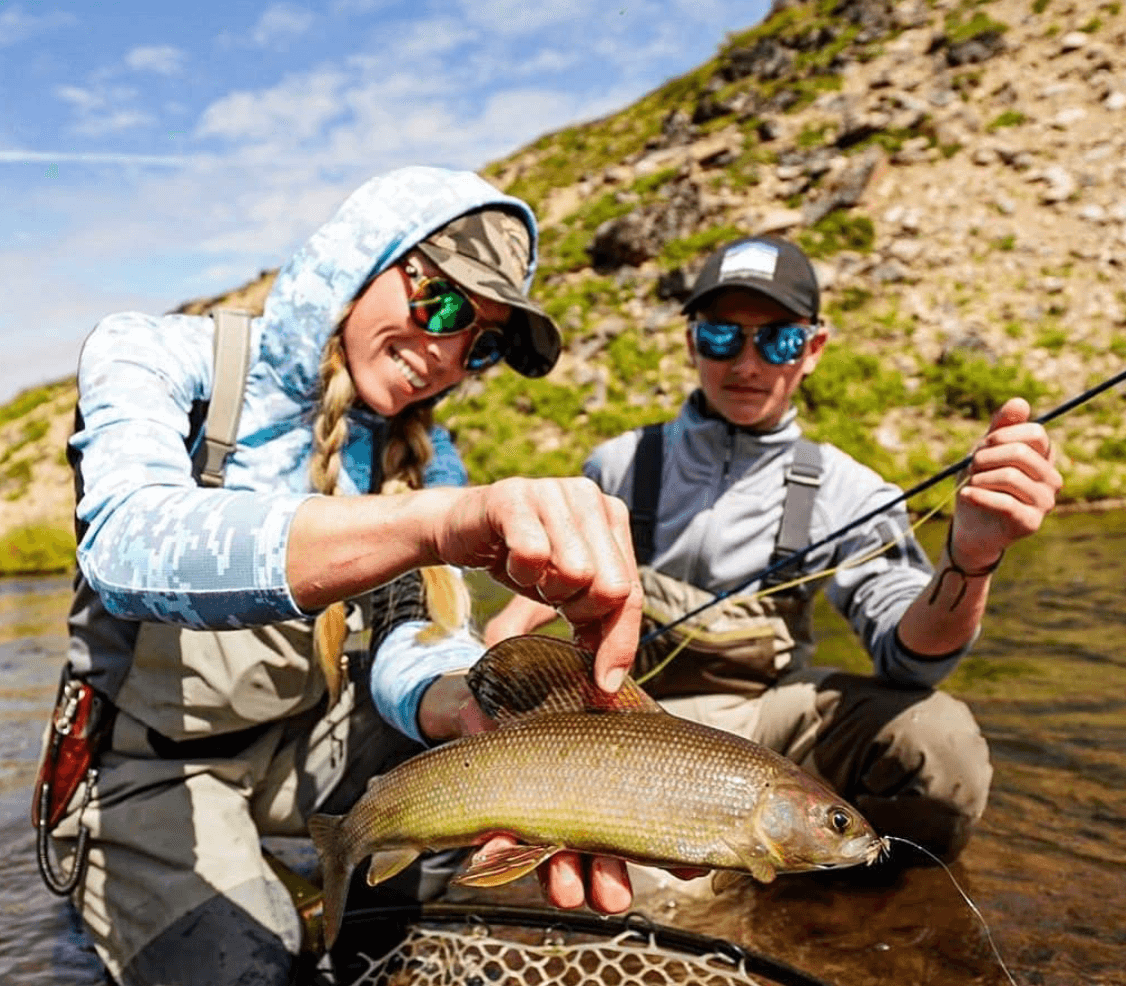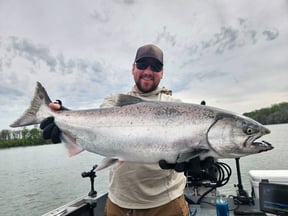Alaska Float Fishing
Soldotna Day Trip
Nearshore Fishing in Ketchikan
Ketchikan Multi-Day Fishing
Snohomish River Pink Salmon
Kokanee & Trout Lake Adventure
Inshore, Nearshore, River in Kenai
Kasilof River King Salmon Trip
Sturgeon Fishing
Lake Michigan Angler's Delight
Naknek River Camp Deluxe Package
Naknek River All-Inclusive
We started Captain Experiences to make it easy to book fishing and hunting guides around the world. With over 2,000 Damn Good Guides, our platform makes finding and booking a trip seamless. Head here to check out our trips.
Salmon and Steelhead are anadromous and known for swimming upstream to spawn. These fish have been incredibly influential across the Northwest U.S. and share many of the same traits. Here’s how steelhead stack up with other species of salmon.
What is a Steelhead?
Steelhead are a distinct anadromous form of coastal rainbow trout, meaning they live in saltwater but return up freshwater tributaries to spawn after a few years. Steelhead are the state fish of Washington, and are much more threatened than rainbow trout due to a much lower distribution and greater changes to their native habitat. While rainbow trout have been introduced into streams all over the world, steelhead rely on clear waterways in the Pacific Northwest to spawn.
Steelhead have also been introduced and do well in the Great Lakes area, spawning upstream from the lakes and erstwhile living in the lakes. Adult rainbow trout can vary in color depending on habitat and location (and steelhead trout vary even more), but they are generally distinguished by a broad red stripe along their lateral line that is most prominent along the line and fades as it expands out. They can often appear greenish/silver above and below the lateral line.
Rainbow Trout
Arguably the most iconic freshwater species to catch on the fly in North America, the rainbow trout is a salmonid native to cold-waters feeding into the Pacific Ocean on both the Western side of North America and the Eastern part of Asia, although the species has been introduced worldwide. It is actually one of the top invasive species around the world, mostly due to the breadth through which the fish has been manually spread. They can also have a big impact on native species, mostly through out-competing them. Rainbow trout have been transported around the world mainly for sport, and are now found on every continent except Antarctica, in many places providing a great gamefish opportunity where previously there was little.

Rainbow trout are probably the most common trout globally and therefore the most commonly caught. They are for many a beginner’s introduction to fishing in streams around the world, particularly those fishing on the fly. They can be somewhat picky with presentation and skittish in general, which makes them all the more of a treat and a challenge. Aside from bass and panfish, they are the most common freshwater fish sought in the US.
How big do Rainbow Trout and Steelhead get?
Generally, most rainbow trout are between half a pound and 5 pounds. Ocean or lake dwelling steelhead are capable of reaching 20 pounds or more. These larger fish look and act more like salmon than trout.
Salmon Species
There are seven species of Pacific salmon, five of which occur in North American waters. The five north american species of Pacific salmon include chinook, coho, chum, sockeye, and pink. While there’s a diverse range of Pacific salmon species only the Atlantic salmon lives in the Atlantic Ocean.
Chinook salmon
Chinook are the biggest species of the Pacific salmon capable of growing up to more than 100 pounds. More common weights for mature chinook are 50 pounds or less. These salmon spawn in large rivers such as the Columbia and Snake rivers but will occasionally use smaller streams when they have enough flow. Due to their size, chinook salmon spawn in the larger gravel of the main section of river where the water flow is highest. Some chinook travel hundreds of miles to spawn and can be found on both sides of the Cascade Range.
Coho Salmon
Coho are a very popular sport fish in the Northwest U.S. Coho are a smaller species of salmon and use coastal streams and rivers. Coho will also use urban streams if the water is cold and clean. These salmon prefer bodies of water with moderate current and smaller gravel for spawning. Coho returning to spawn gather at the mouths of streams and river but will wait to enter until the water flow rises. Increases in water flow usually require rain upstream. Better flow in rivers means deeper water and enable fish to pass obstacles.
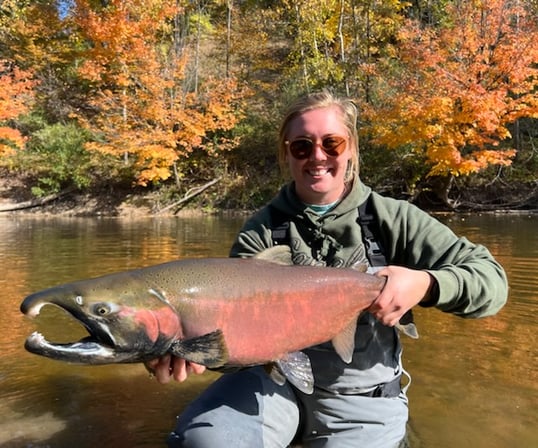
Sockeye Salmon
Sockeye salmon are among the most delicious species. Dams have heavily impacted this species of salmon and even removed them from several traditional spawning grounds. However, a close relative kokanee Salmon have taken their place. Freshly hatched sockeye salmon require a lake to make it to adulthood. This means sockeye must choose to spawn in a river that contains a lake. While sockeye can adapt to a wide range of current and gravel conditions, without a lake the fry will not survive. Historically, large rivers with enough room for spawning have supported the biggest sockeye runs in the country.
Pink Salmon
Pink salmon are also known as humpback salmon because males will develop a large hump on their back during the spawn. This is the smallest species of salmon that spawns in the fall. In Washington, the pink salmon only spawn during odd years. Pink salmon predominantly use the main section of large rivers that are often very close to the ocean. This is because their fry travel directly to the ocean after hatching. The shorter travel distance reduces the chance of their young being eaten by predators. Pink salmon typically have a lifespan of only two years before they return to the river to spawn.
Chum Salmon
Chum salmon also known as “dog salmon” reach a maximum weight of 35 pounds. The nickname comes from the large teeth male chum salmon develop during the spawn. These teeth resemble canines which is the reason behind the name which resemble canine teeth. Like coho, chum salmon can be found in virtually every small coastal stream. Chum salmon use small streams or the lower stretches of larger rivers. This means that chum and coho often use the same streams but coho usually spawn further up stream.
Steelhead Vs. Salmon
Steelhead are rainbow trout that have access to marine resources. Rainbow trout on the other hand, only live in freshwater rivers which causes them to have more vivid color but don’t grow as large. Steelhead are often listed as an eighth Pacific salmon, but unlike other Pacific salmon, they are capable of repeat spawning and do not die after spawning. It has been suggested that they be grouped with other fish as “Pacific Trout”.
Salmon and Steelhead are anadromous fish, meaning they are born in freshwater, migrate out to the ocean to mature into adults, and then swim back to freshwater to spawn. Most anadromous fish die after spawning and their decaying carcasses provide nutrients back into the ecosystem, providing food to many other animals.
Joey Butrus
Updated on August 2, 2023
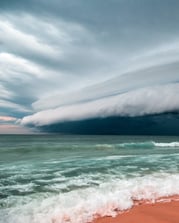
August 21, 2023
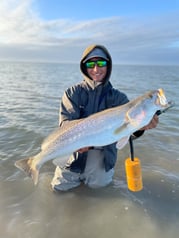
January 19, 2021
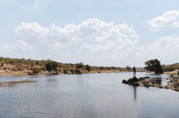
March 8, 2022

June 28, 2023
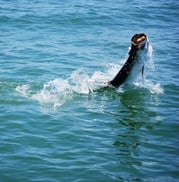
April 15, 2022
Related Articles
September 12, 2024
January 27, 2021
June 13, 2022
Featured Locations
- Fishing Charters Near Me
- Austin Fishing Guides
- Biloxi Fishing Charters
- Bradenton Fishing Charters
- Cabo San Lucas Fishing Charters
- Cancun Fishing Charters
- Cape Coral Fishing Charters
- Charleston Fishing Charters
- Clearwater Fishing Charters
- Corpus Christi Fishing Charters
- Crystal River Fishing Charters
- Dauphin Island Fishing Charters
- Daytona Beach Fishing Charters
- Destin Fishing Charters
- Fort Lauderdale Fishing Charters
- Fort Myers Fishing Charters
- Fort Walton Beach Fishing Charters
- Galveston Fishing Charters
- Gulf Shores Fishing Charters
- Hatteras Fishing Charters
- Hilton Head Fishing Charters
- Islamorada Fishing Charters
- Jacksonville Fishing Charters
- Jupiter Fishing Charters
- Key Largo Fishing Charters
- Key West Fishing Charters
- Kona Fishing Charters
- Lakeside Marblehead Fishing Charters
- Marathon Fishing Charters
- Marco Island Fishing Charters
- Miami Fishing Charters
- Montauk Fishing Charters
- Morehead City Fishing Charters
- Naples Fishing Charters
- New Orleans Fishing Charters
- New Smyrna Beach Fishing Charters
- Ocean City Fishing Charters
- Orange Beach Fishing Charters
- Panama City Beach Fishing Charters
- Pensacola Fishing Charters
- Pompano Beach Fishing Charters
- Port Aransas Fishing Charters
- Port Orange Fishing Charters
- Rockport Fishing Charters
- San Diego Fishing Charters
- San Juan Fishing Charters
- Sarasota Fishing Charters
- South Padre Island Fishing Charters
- St. Augustine Fishing Charters
- St. Petersburg Fishing Charters
- Tampa Fishing Charters
- Tarpon Springs Fishing Charters
- Venice Fishing Charters
- Virginia Beach Fishing Charters
- West Palm Beach Fishing Charters
- Wilmington Fishing Charters
- Wrightsville Beach Fishing Charters

